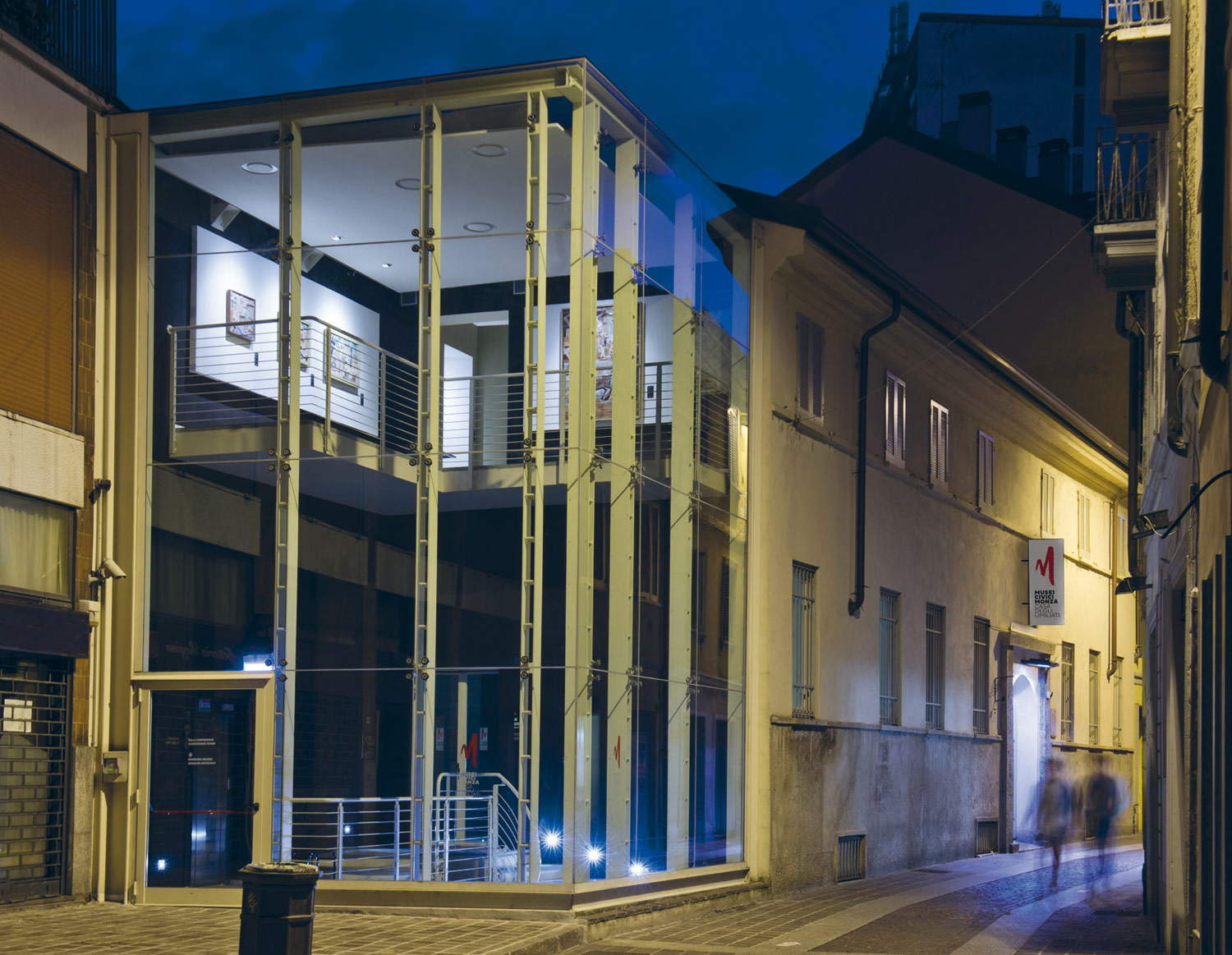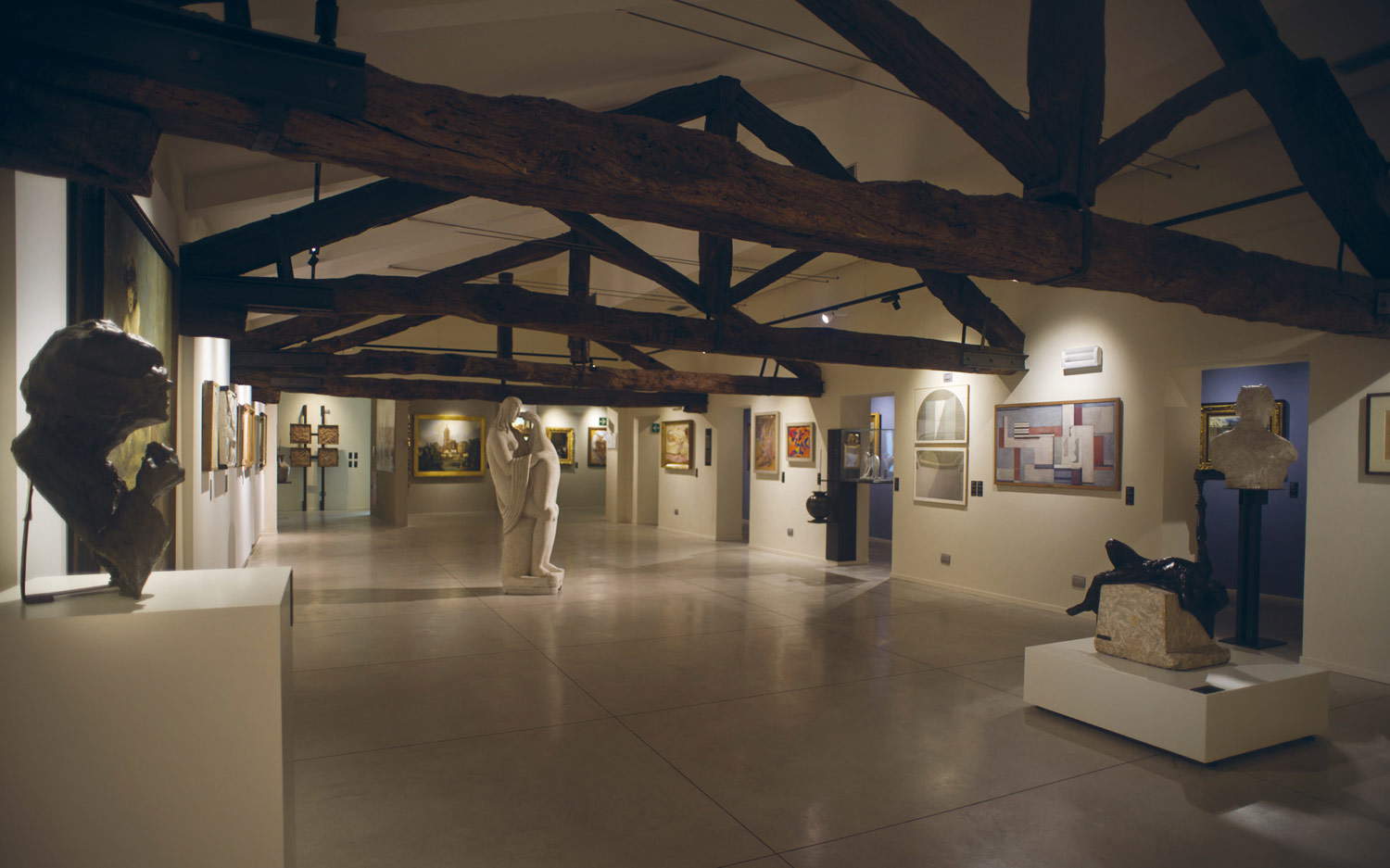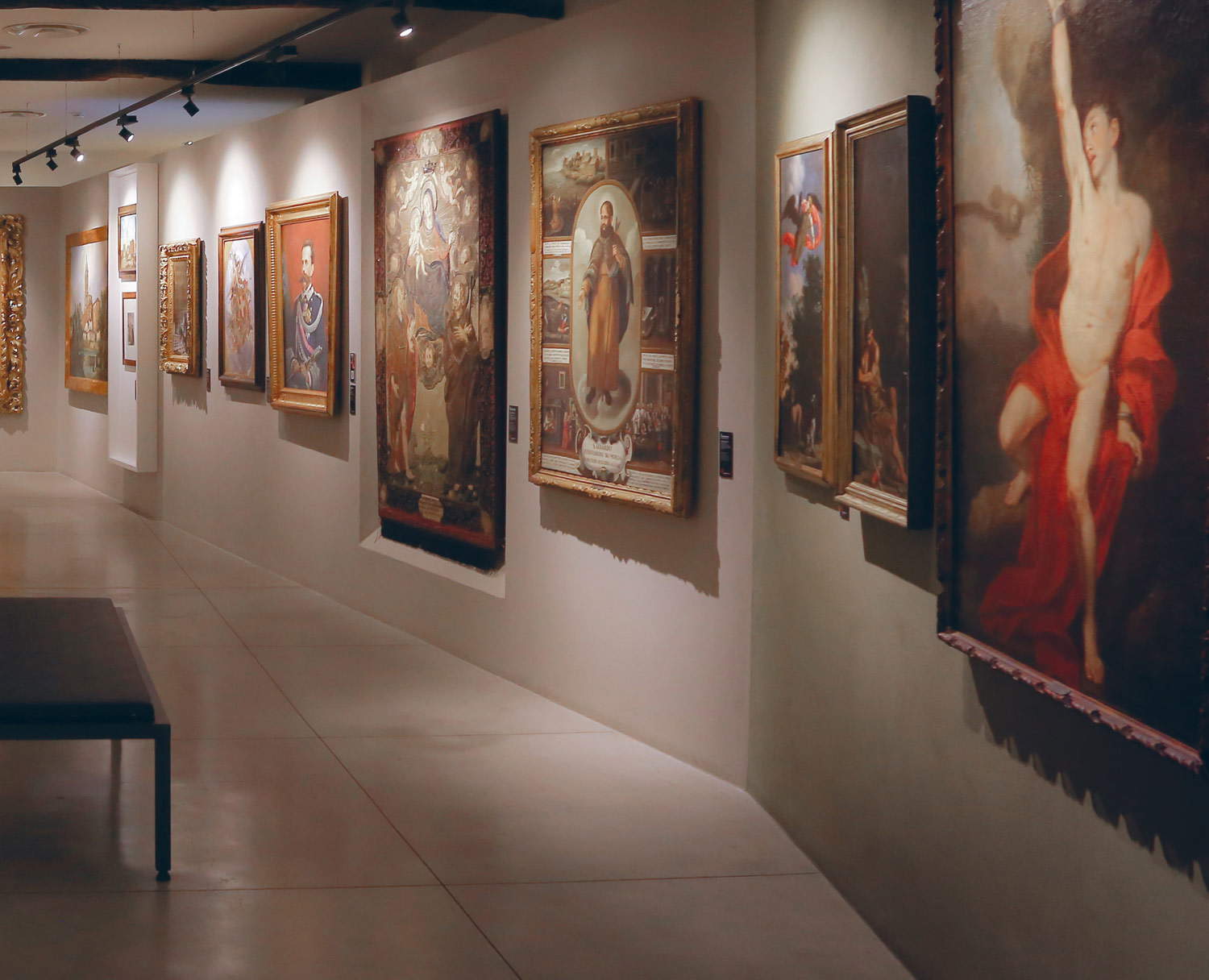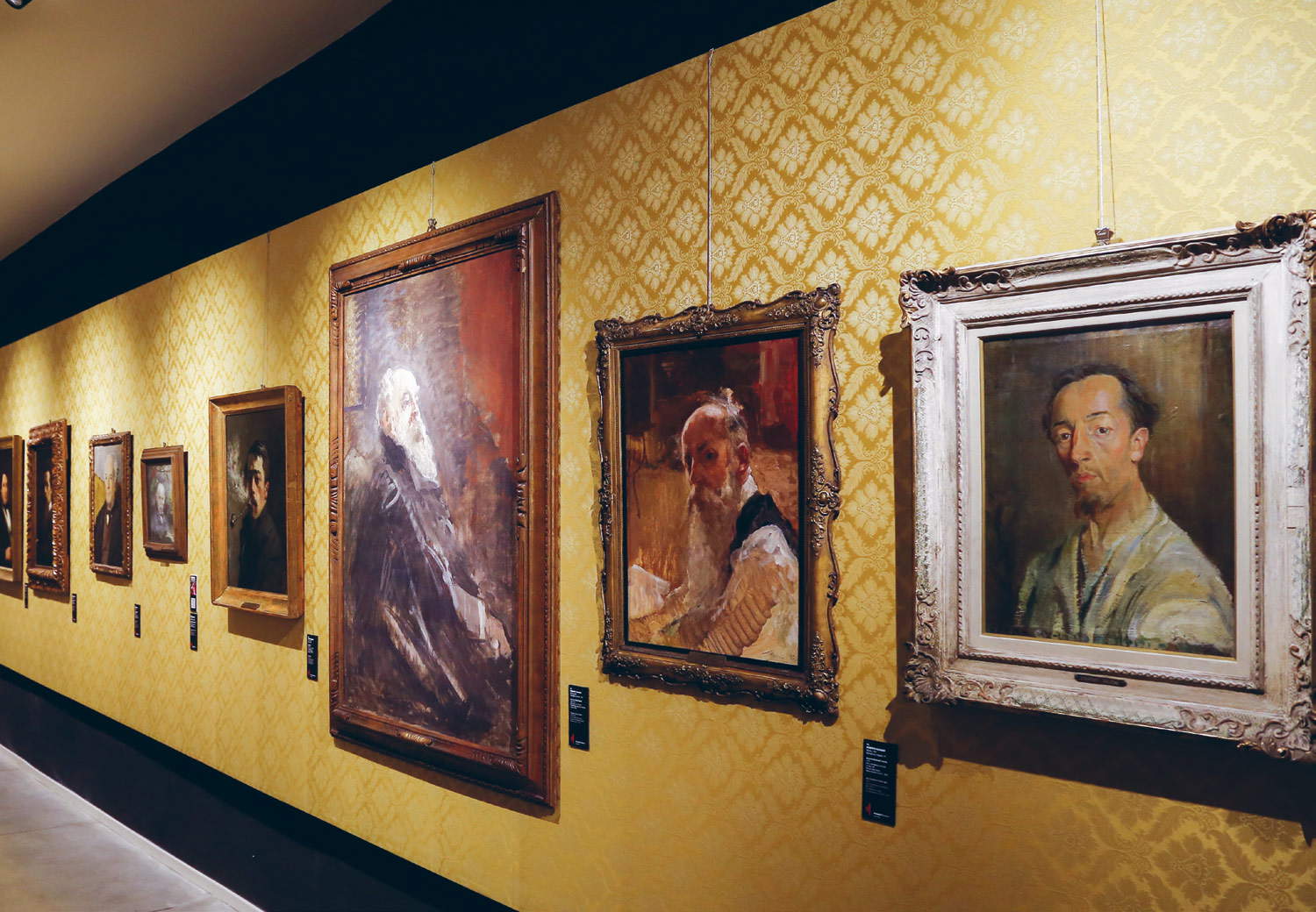In the historic center of Monza, the historic Casa degli Umiliati now houses the city’s Civic Museums, but at one time in the Middle Ages, the Umiliati, or those who belonged to themedieval order that advocated a model of life devoted tosobriety and poverty, gathered here. Thanks to Innocent III, the order experienced a strong expansion, and the buildings reserved for them also spread, especially in Lombardy and particularly in Monza. The latter were divided into two types: on the one hand, convents used by religious belonging to the same order, and on the other, meeting places for lay affiliates, as in the case of the House of the Humiliati. The wide diffusion and great commercial enterprise of the Umiliati allowed them to become protagonists in the economic and social life of the time, but for the same reasons they were considered heretical, since they were rich and powerful: the Church began to view the order with distrust, until in 1571 St. Charles Borromeo had it dissolved.
The entire architectural complex underwent several modifications over time, which make elements from the various rehashes still visible today: some date back to the origins, others to the 18th century, still others to the 20th century, and obviously the most recent ones date back to the last interventions, when it was decided to use the Casa degli Umiliati as a museum. In fact, only after a long restoration of the historical building, during which they tried to recover as much as possible the ancient structure, reasoning also in function of the presence of new tools and technologies suitable for the exhibition and preservation of works of art, the Civic Museums of Monza opened its doors to visitors in 2014.
Previously, it was some rooms of the Villa Reale in Monza that housed the city’s picture gallery and the historical-ethnological section : the city museums were officially born in 1935 out of a desire to showcase the significant donations offered to the City of Monza since the end of the 19th century. Subsequently, the two sections were divided: Villa Reale continued to house the picture gallery, while theArengario housed the historical section in the 1960s. Then in 1984 both venues were closed to the public, transferring the collections to storage. As already stated, it will only be in 2014 that both sections will be reunited in the restored and musealized venue of the Casa degli Umiliati.
 |
| Musei Civici di Monza, Casa degli Umiliati |
 |
| The courtyard of the Casa degli Umiliati |
The exhibition itinerary is now divided into thirteen sections displaying 140 objects, including paintings, sculptures, installations and artifacts, tracing the history and art of Monza from Roman times to contemporary times. However, the exhibition itinerary, between the ground floor and the second floor, can be considered as a journey through the different themes covered, from portraiture to landscape, from sacred art to nineteenth- and twentieth-century art.
It begins with a corpus of archaeological finds discovered in the Monza area dating from the period between the second century B.C. and the second century A.D.: characteristic of this period of Romanization are the burial epigraphs that the Celtic populations present in the area began to make following the assimilation of Roman religion and everyday culture. It was thanks to an epigraph carved in the granite of an altar dedicated to Hercules that the ancient name of the people of Monza, Modiciates, was handed down.
Dating back to the Middle Ages, on the other hand, are objects that testify to the religious and civic customs of the city of Modoetia, Monza’s ancient name: These include a bronze staio, theancient unit of measurement of the municipality; a block of serizzo that was used as a touchstone to indicate length and capacity references; stones carved and engraved with religious symbols testifying to the strong spirituality of the medieval period; and the Lamentation over the Dead Christ by Giuseppe Meda (Milan, 1534 - 1599).
The second floor, on the other hand, houses artistic works that tell the story of the collection’s origins and span the 19th and 20th centuries, dwelling on the paintings, frescoes, portraits and ceramics that gave wide scope to the city’s art.
Thanks to the donation in 1923 of a large part of Eva Galbesi Segrè ’s collection of paintings, antique prints and objets d’art, the foundations were laid for a civic museum, the need for which had long been felt; in fact, the picture gallery was established in 1935, bringing together the bequest of the aforementioned collection with other donations from various families in Monza. They are mostly works depicting episodes from the life of Christ, lives of saints, mythological scenes, allegorical figures and still lifes.
 |
| Hall of the picture gallery of the Civic Museums of Monza |
 |
| Hall of the picture gallery of the Civic Museums of Monza |
 |
| Hall of the picture gallery of the Civic Museums of Monza |
 |
| Hall of the picture gallery of the Musei Civici di Monza |
Monza painters of the late nineteenth century, such as Eugenio Spreafico (Monza, 1856 - Magreglio, 1919) and Emilio Borsa (Milan, 1857 - Monza, 1931), produced splendid canvases where the theme of work is central, as they were in a period of great economic and social transformation, in which agricultural and peasant activity gave way to the working world. Strong in these canvases is the feeling of melancholy that pervades the protagonists and the entire landscape, even touching on the theme ofchildhood. However, frequent in nineteenth-century Monza painting were also landscape paintings, first among all the artists of this genre Mosè Bianchi (Monza, 1840 - 1904). The latter belonged to an entire family of painters, which included Pompeo Mariani (Monza, 1857 - Bordighera, 1927) and Emilio Borsa, so much so that, according to critics, they constituted a Monza School. In the Civic Museums, Moses Bianchi is also present with two graphic works related to the fresco technique: a female figure personifying History, part of a pictorial cycle frescoed by the artist in Lonigo, in the Villa Giovanelli, and the large preparatory cartoon of the Genius of Savoy, later painted on the ceiling of the Saletta Reale of Monza Station.
A particular section of the Civic Museums is also entirely dedicated to portraits: a real gallery has been created, even from the point of view of layout. In fact, princes, prelates, high functionaries, poets, men of letters, women, and men of industry follow one another here: personalities deeply linked to local history who have made a notable contribution to the economic and social life of the city. Also depicted, of course, are the leading painters of the city’s artistic scene at the turn of the 19th and 20th centuries.
At the beginning of the twentieth century, three artists, Eugenio Baioni (1880 - 1936), Anselmo Bucci (Fossombrone, 1887 - Monza, 1955) and Guido Caprotti (Monza, 1887 - Avila, 1966), bonded together with other young artists in a fellowship called Coenobium with the intention of renewing art that still presented a nineteenth-century legacy.
 |
| The Portrait Gallery |
 |
| The Portrait Gallery |
In order to link artistic talent and craftsmanship practice, theIstituto Superiore Industrie Artistiche (ISIA) was founded in 1927, which contributed to the training of outstanding personalities until its termination in 1943 due to the war period. The task of internationalizing this artistic production was instead entrusted to the Biennales: Villa Reale hosted three editions (1923, 1925 and 1927), while in 1930 the event became the Triennale and Monza hosted the first edition; the Triennale was later transferred to Milan.
Fundamental to the artistic rebirth of the city after the war season, on the other hand, was the “City of Monza” National Painting Prize: the winning works were added to the civic collections, which it was possible to admire again starting in 1951, when the picture gallery was reopened.
All these passages, events and personalities that marked the history and art of Monza are retraced in the various rooms of the Casa degli Umiliati; in addition, the museum collection also includes a significant heritage of ancient and modern prints: these are not permanently exhibited for conservation reasons, but they constitute the important treasure of the Prints Cabinet (prints are, however, often exhibited in the context of temporary exhibitions).
One of the fundamental points of the Musei Civici di Monza is the relationship between the museum and the city, since many works and art objects on display are linked to city places: visitors are therefore invited not to stop at the Museums’ collections alone, but to continue the journey through the city’s history through churches, palaces, and monuments. In fact, the Museums aim to offer further insights and work, particularly for schools, with cross-curricular paths and themes, iconographic readings, and opportunities to experience art firsthand, intending to influence knowledge of the territory and collective heritage. Students therefore have the opportunity to work in the museum and the teaching room according to macro thematic areas defined according to the age of the children and their educational needs: for example, Faces, bodies, states of mind - On the steps of the Monaca di Monza; Landscape, space, nature - Special temporary exhibition; Matter, form, color; Monza and its history.
A special package is dedicated to the figure of the Nun of Monza that includes an understanding of the events between history and novel and the discovery of places and traces of the city where Marianna de Leyva lived in the late 16th and early 17th centuries. The package is for secondary school (third classes) and high school: it includes video + guided tour in the city Sui passi della Monaca di Monza and theater performance + guided tour in the city. The Civic Museums of Monza also organize guided activities with experts in the form of active itineraries and art workshops, providing special spaces, materials and tools: a classroom for carrying out educational activities, a multimedia touch screen table rich in content, useful for the museum visit and for in-depth study of the works on display, educational materials. School-work alternation projects and meetings dedicated to teachers are also available.
The Civic Museums are also active in terms of technological innovation: in fact, they have recently launched the new SmartGuide WebApp, a smart guide that allows access to all multimedia content without the need to download any app on your smartphone, tablet or computer. Simply frame the QRcode or enter the address provided by the ticket office and thus begin your journey through the museum. The WebApp was designed by Fabrica Ludens following the most modern storytelling techniques. All this information can also be found on the museums’ official website, www.museicivicimonza.it. An important starting point for organizing a visit to the museum complex, one of the most important in all of Lombardy.
Warning: the translation into English of the original Italian article was created using automatic tools. We undertake to review all articles, but we do not guarantee the total absence of inaccuracies in the translation due to the program. You can find the original by clicking on the ITA button. If you find any mistake,please contact us.